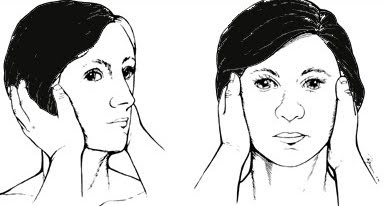Vestibular neuronitis
Contents
Definition:
Vestibular neuronitis is characterized by acute onset of severe vertigo with no other signs / symptoms relating to hearing. Patients with vestibular neuronitis usually have nausea / vomiting without auditory symptoms. Usually these symptoms resolve within a week's time, sometimes the recovery may be more protracted with persistent disequilibrium.
Etiology:
1. Viral infections
2. Labyrinthine ischemia (rare)
Investigations:
Caloric test: has been the traditional gold standard for detecting perpetual vestibular defect.
Recent innovations:
Head impulse test: This test was first developed by Mark Mandala etal in 2005. This test measures the functioning of the lateral canal. Also known as Head thrust test.
Procedure:
The patient is asked to fix the eyes on their index finger held at an arms length. The patient's head is moved rapidly to each side (>2000 degrees / sec).
The examiner looks for the presence of nystagmus.
Head heave test:
This test measures the functioning of utricle. This test is performed by heaving the head of the patient rapidly (abrupt, high acceleration, interaural translations (heaves) of about 5 - 10 cms in excursion. The examiner standing in front of the patient should observe for correction saccades.
Vibration induced nystagmus:
This is elicited by using a battery powered vibrator placed over mastoid region for 10 secs, first on one side and then on the other. It is considered to be positive if persistent horizontal torsional nystagmus was evoked for the duration of the stimulus and if the phenomenon is reproducible. The carotid area in the neck is avoided while placing the vibrator.
In case the patient already has spontaneous nystagmus, the test results were considered positive positive when nystagmus clearly shows an increase in its frequency.
Vibrator induced nystagmus depends on direct stimulation of vestibular end organ on both sides because the stimulus is transmitted through the bone to both labyrinth; thus if one side is less responsive the other will predominate. For these tests to be sensitive there must be atleast small asymmetry in peripheral vestibular function.
Presence of cerebellar stroke should be ruled out in all these patients as this condition (pseudovestibular neuronitis) can mimic this condition. MRI should be performed to rule out this condition.
Treatment:
1. Oral methyl prednisolone 60 mg /day tapered during 2 1/2 weeks.
2. Acyclovir 800 mg 4 times a day for 7 days.

